On-Line Monitoring of Main Step-Up Transformers Pays Off for Large Solar Operator
When entrepreneurial engineers began playing with the first microprocessors in the late 1970s, they sought out markets that could use autonomous systems to interpret data from outboard sensors, and report the conditions to stakeholders. The value proposition was the savings realized by replacing the process of manual testing with expensive test sets, and the staff of trained specialists performing the tests (giving judgements on those results).
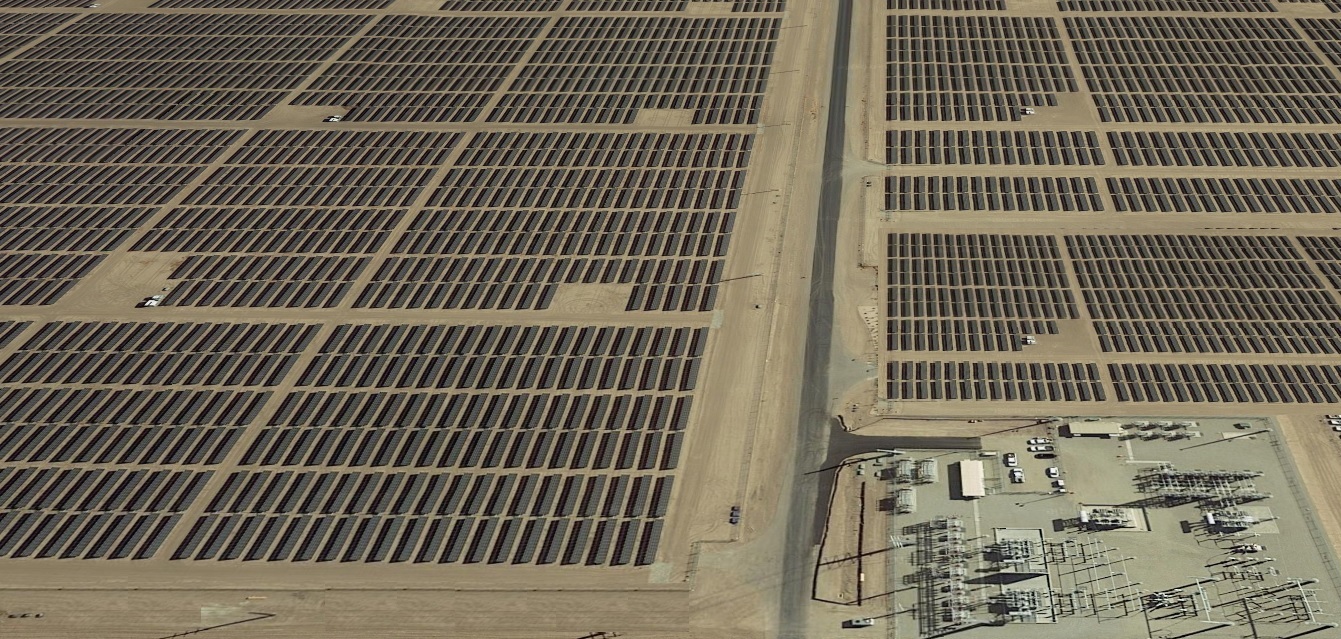
Since the early days of Intel 8080 or Motorola 6800 processors, there have been many types of condition monitors aimed at the utility substation. Many have come and gone; most were less reliable than the equipment they were monitoring. Many of these had some merit, but, in the early days, communicating that data to stakeholders was not possible.
The goal, even in the 1970s, was to communicate the answer– the distillation of the data – toward an action plan. However, the early monitors garnered no trust. They simply routed raw data to experts who were tasked with reviewing it. Data management became a thorny issue; scanning through data produced by monitors by asset SMEs quickly became impossible, especially in light of the layoffs and down-sizing happening at the time.
Add to this problem the short lifespan of the early monitors, and the many companies that produced them, and it’s clear why the concepts never reached a full potential of usefulness. The goal for on-line monitoring was to give an actionable signal that an asset was in trouble, with a time margin to intervene and prevent a failure. Continually serving up data for a "panel of experts", to then give a recommendation on the condition of an asset, was never the value proposition.
The early adopters of monitoring quickly learned that monitoring systems do not immediately reduce the maintenance budget. In fact, the reverse was true. Monitoring quickly identifies the "bad actors", so they could be moved up the list for service. Only after the emergent assets were repaired and tested would the O&M expenses gradually decrease. Maintenance managers discovered a "sweet spot", where deployed monitoring and regular manual testing worked together to produce a lower overall minimum cost.
With the refinement of the monitoring system over decades, many renewable energy installations (and utilities in general) have moved to nearly full reliance of on-line condition monitoring, thereby making the total expense only the depreciated cost of the monitoring system. The reality of the reliable automatic system is that calendar-based maintenance is nearly gone.
.jpg)
12-channel bushing monitor system installed beside the transformer
In May 2021, a bushing monitoring system was installed by factory field engineers on the main step-up power transformer at a large solar installation in Imperial County, California. For this system, six signals from the transformer bushing C1 test taps were given by bushing sensors, three low-side voltage signals were taken from PTs, and three high-side voltage signals were taken from CCVTs.
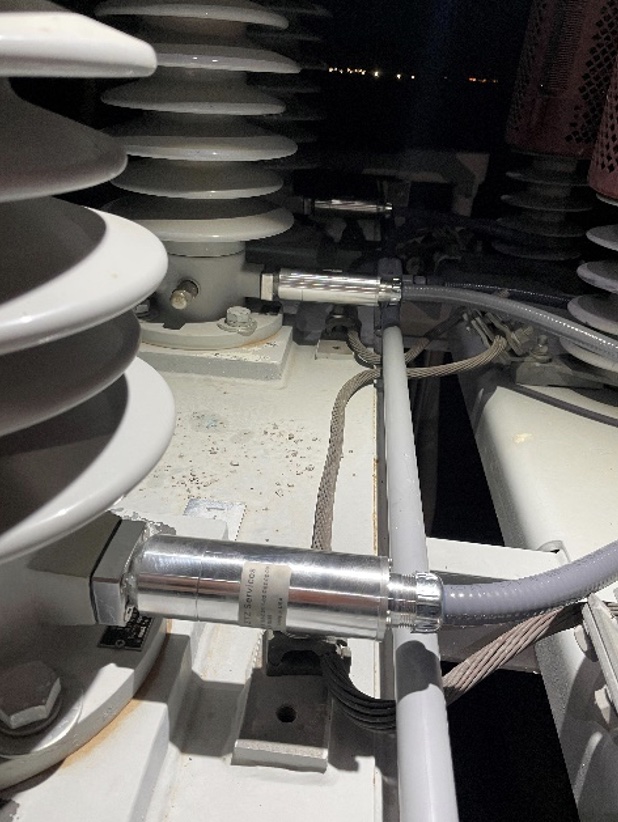
Precision-engineered bushing sensors installed on the C1 bushing test taps
The use of all twelve phasor measurements resulted in an extremely robust system with very high signal-to-noise ratio. By using measured system phasor quantities, the bushing attributes can be very accurately known.
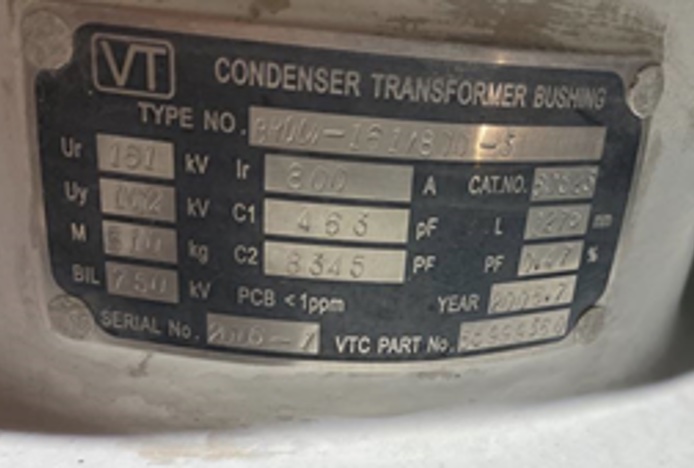
H1 bushing nameplate showing 0.47% power factor rating
Within a few days, it was quite apparent there was a problem with the H1 high side bushing, with power factor nearing three times nameplate (Figure 4). Phase H2 and H3 showed stable power factor, essentially at nameplate values.
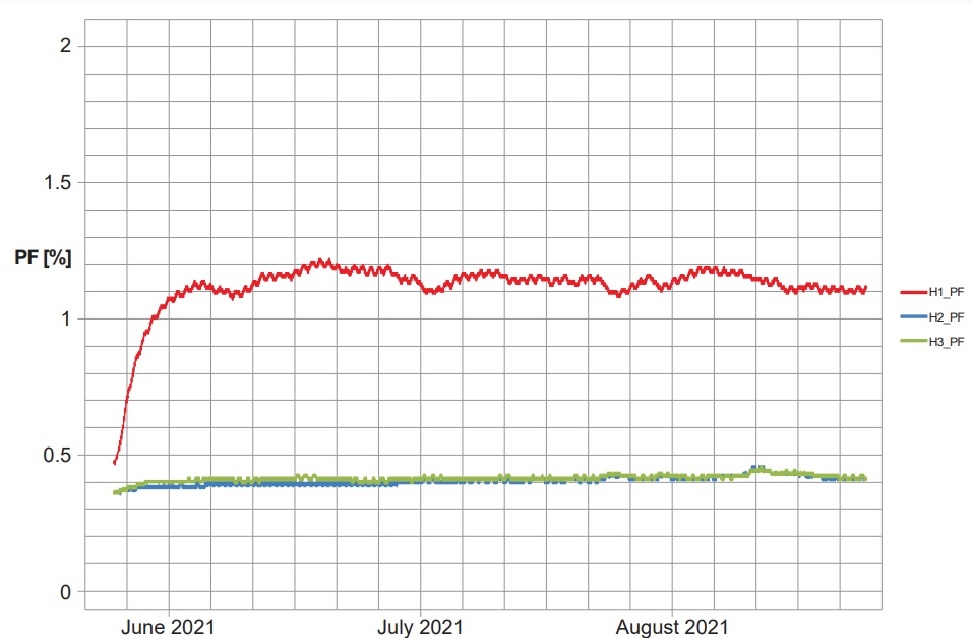
Measurements, in percent, plotted from day of installation to mid-August, 2021
Because of the heavy load cycle, this transformer was classified as being applied to "rough service". The high power factor reading put it beyond the limit for any "watch list", but was classified as "unstable", and in danger of failure.
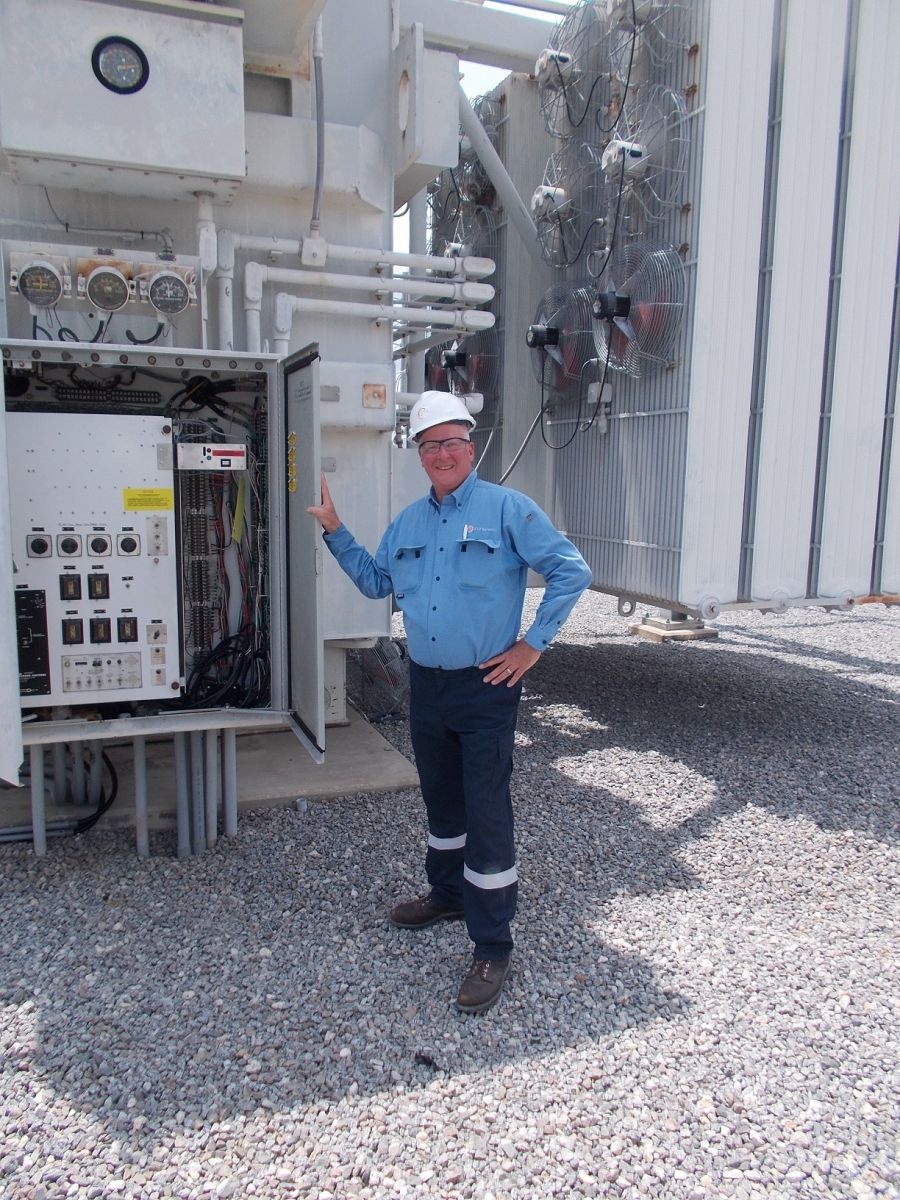 The bushing was tested with off-line techniques, which confirmed the high power factor of H1. Plots of bushing capacitance and high side imbalance current were stable since the monitor installation, showing the likelihood that the H1 bushing had high power factor when the transformer was commissioned. (at right: Night time H1 bushing replacement)
The bushing was tested with off-line techniques, which confirmed the high power factor of H1. Plots of bushing capacitance and high side imbalance current were stable since the monitor installation, showing the likelihood that the H1 bushing had high power factor when the transformer was commissioned. (at right: Night time H1 bushing replacement)
With a spare transformer being located 1,800 miles away, a transformer replacement would take at least four weeks. The lost revenue during this time would be ten times the value of the transformer. The operator of the solar farm prudently replaced the H1 bushing during a nighttime outage, with no loss of revenue, likely saving the cost and lost revenue of a catastrophic failure.
Scheduling the repair work during the night time hours would not affect revenue. Given the excellent performance history of over 700 bushing monitors installed within the parent utility, trusting the guidance of the monitor toward the prompt bushing replacement was an easy decision.
John Eastman is President of ZTZ Services International. He has 30 years' experience with substation testing and development of on-line predictive maintenance products. Previously, John was Global Business Manager for circuit breaker monitoring products at INCON and Franklin Grid Solutions, and named on two US Patents related to new monitoring concepts. He is a graduate of University of Maine in Electrical Engineering, and recently an MS in Teaching & Learning for secondary school Mathematics. He is a Senior Member of IEEE, and lives in Portland, Maine.
ZTZ Services International | www.ztzservices.us
|
|
Author: John Eastman
Volume: 2022 July/August










.png?r=8693)

